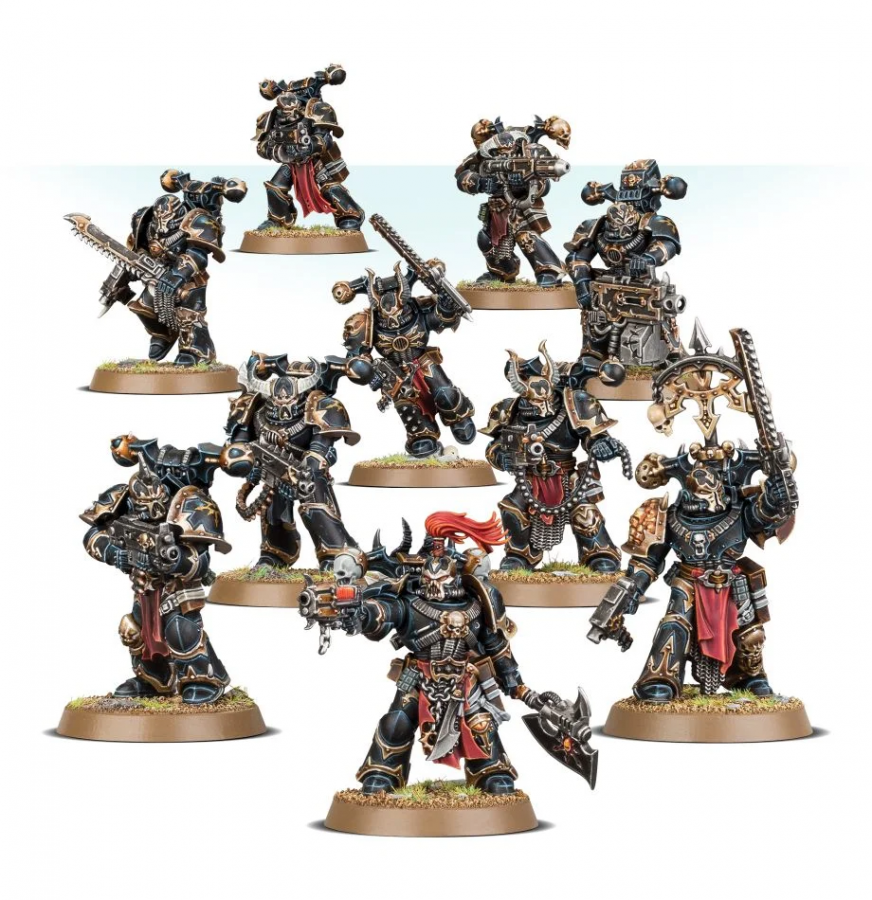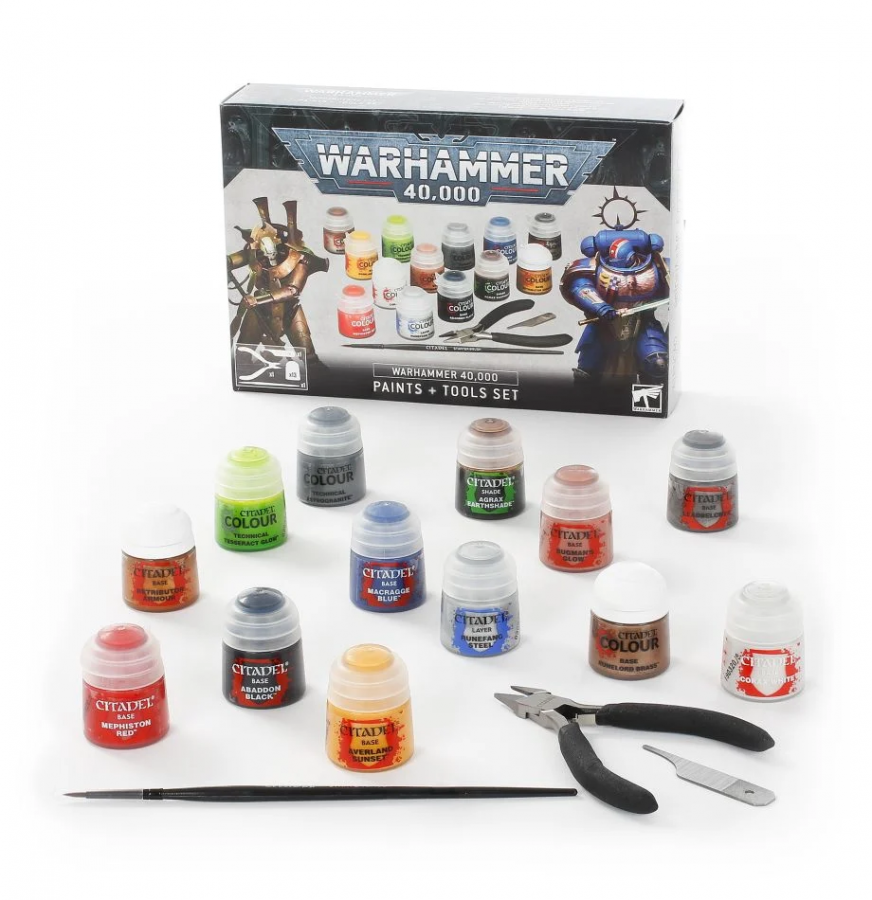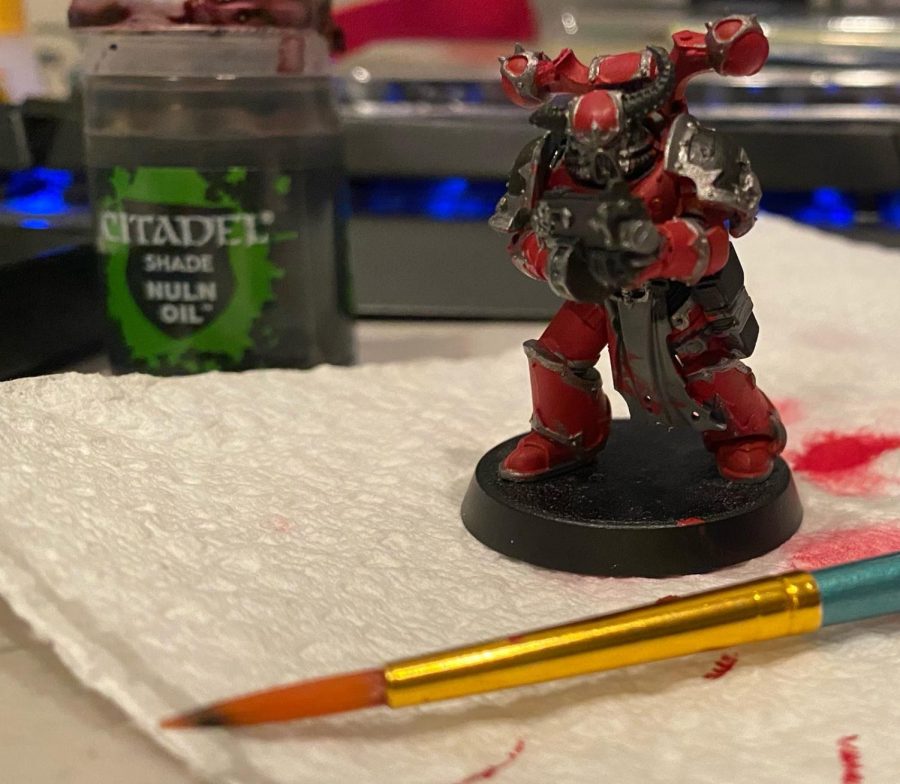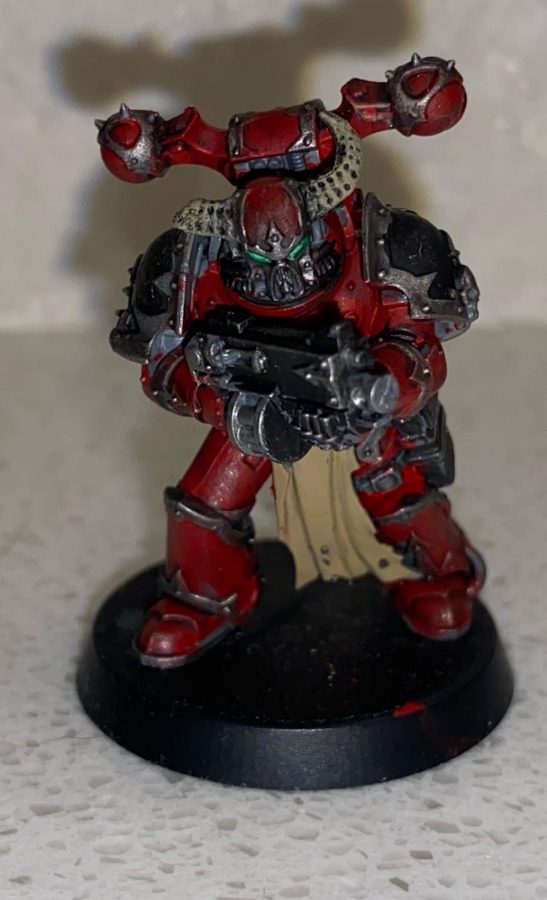Model Painting: A Fun and Creative Hobby
From battle-hardened space marines to mysterious wizards, model painting is a hobby anyone can enjoy.
A finished set of figurines.
November 15, 2020
Model painting is a hobby many enjoy. Its popularity originated from different tabletop roleplaying games like Dungeons and Dragons and Warhammer 40K (Related: learn more about Warhammer). Models are very easy to come by; check a nearby hobby store or look online. Games Workshop makes good Warhammer models, although Warhammer tends to be more expensive compared to Dungeons and Dragons. Model painting is a relaxing creative pastime that’s super easy and fun!
First things first, to start painting figurines, you need the right materials. Citadel paint starter sets are very nice and include a bunch of useful paints. It also includes cutters that are needed to build Warhammer models of your own, and a mold line cleaner to scrape off any mold lines left after casting. A cheap pack of brushes from the Dollar Store works just fine, and super glue to build models is very easy to come by.
After the model is built, the next step is to add the base coat of paint. This is where creativity comes into play; painting the model is relaxing and shouldn’t be stressful. Color choices are endless and are fun to experiment with. The picture below shows a chaos space marine from Warhammer. The base colors used are mephiston red, abbadon black, and leadbelcher (silver). The main color of the model can be put down messily, so don’t worry about staying inside the lines, as this can be cleaned up later with other colors. Thinning paints down with water can make the paint flow easier, and when used on layers, it will show more detail. Paint straight out of the pot is thick and will hide detail.
The model has now gone through a process called washing. It uses what’s called a wash, a heavily watered down paint that sits into recesses of models to give definition and add depth and shadows. After washing, the tiny details are picked out, such as the horns, loincloth and eyes in the photo below. To complete the model, some more leadbelcher silver was dry brushed onto it. Dry brushing is where most of the paint on the brush is wiped off onto a cloth, and then, in broad strokes, is laid on thinly. This catches high points of the model and gives the model a battle-damaged look. Dry brushing can be done with any color and works really well for most models.
Miniature painting is a hobby enjoyed by many due to its relaxing nature and ability to express creativity. Even if it can get a bit on the pricey side for figurines, the feeling of accomplishment you get when you slap that final coat of paint on a model is priceless.












